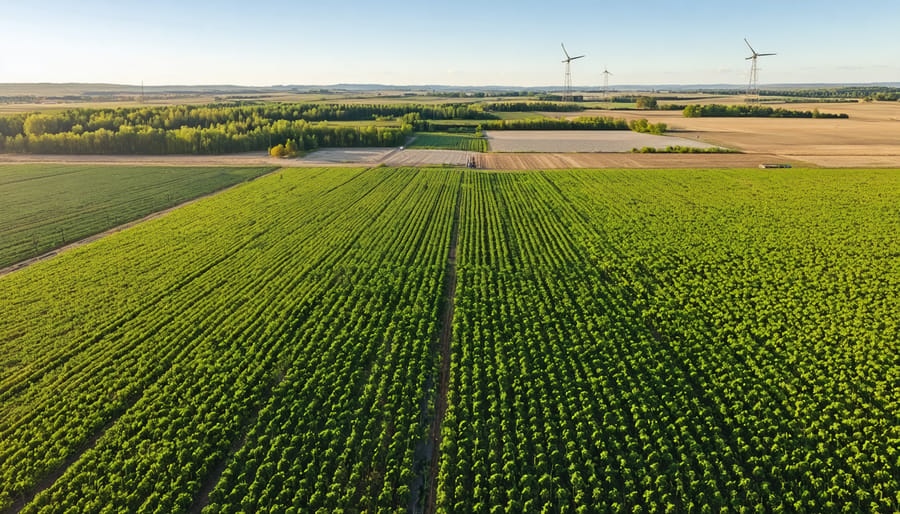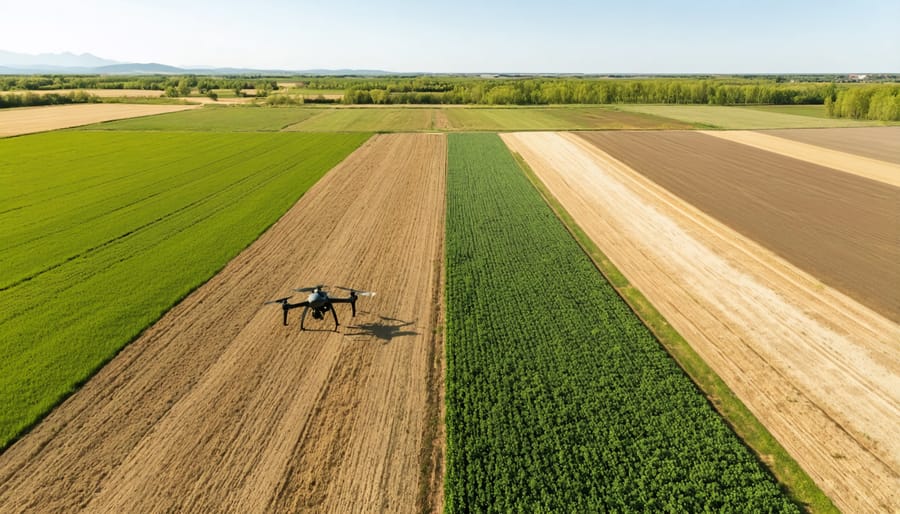Transform your farm management with powerful open-source software that’s already revolutionizing organic precision agriculture across Alberta. Track crop rotations, monitor soil health, and manage resources without paying expensive licensing fees using proven solutions like FarmOS and OpenATK. Canadian farmers save an average of $3,000 annually by switching to open-source alternatives while maintaining complete control over their data and customization options.
These community-driven platforms offer robust features previously available only in premium software: detailed field mapping, comprehensive yield tracking, and automated weather integration. Local success stories, including the Thompson Family Farm in Red Deer, demonstrate how open-source solutions effectively manage operations ranging from 100 to 10,000 hectares while supporting organic certification requirements.
The transition to digital farm management no longer requires significant investment or technical expertise. A growing network of Alberta-based farmers and developers actively contributes to these platforms, ensuring solutions remain relevant to Canadian agricultural conditions and regulations.
Top Open-Source Farm Management Solutions for Alberta Farmers
farmOS: The Community Favorite
Among open-source farm management solutions, farmOS has emerged as the clear favorite within Alberta’s farming community, offering a robust platform that combines flexibility with practical functionality. This web-based application stands out for its comprehensive approach to soil management techniques and overall farm operations tracking.
At the Sustainability Research Farm near Lethbridge, farmer Sarah Thompson implemented farmOS to manage her 300-hectare organic operation. “What impressed me most was how easily it adapted to our specific needs,” she shares. “From tracking crop rotations to managing our livestock records, everything’s in one place.”
The software’s standout features include its intuitive mapping system, which allows farmers to create detailed field plans and track activities across their land. The record-keeping capabilities extend to equipment maintenance, harvest data, and certification compliance – crucial for organic producers. Perhaps most importantly, farmOS works offline, addressing the reality of spotty rural internet coverage across Alberta.
The community aspect truly sets farmOS apart. Local user groups in Edmonton and Calgary regularly meet to share tips and troubleshoot challenges. These gatherings have led to practical improvements, such as custom modules for tracking frost dates and managing irrigation schedules specific to Alberta’s climate.
Implementation costs remain minimal, requiring only basic hosting services and optional technical support. The Organic Producers Association of Alberta reports that over 60% of their members who use digital farm management tools have chosen farmOS, citing its reliability and strong community support as key factors in their decision.
For those considering the switch, the farmOS community offers free monthly online training sessions tailored to Canadian agricultural practices.
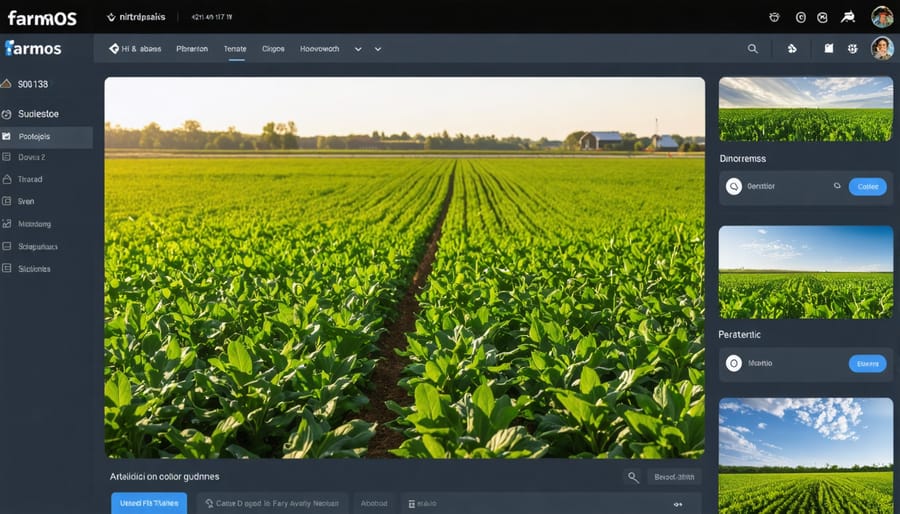
Tania: Simple Yet Powerful
Tania has emerged as a go-to solution for organic farmers across Alberta and beyond, offering a streamlined approach to managing small to medium-sized operations. Built with sustainability in mind, this open-source platform excels at tracking crop rotations, managing seed inventory, and monitoring organic certification requirements.
What sets Tania apart is its user-friendly interface combined with robust features specifically designed for organic farming practices. The software allows farmers to maintain detailed records of their organic inputs, crop histories, and soil management practices – essential components for maintaining organic certification. Many Alberta farmers appreciate its ability to generate compliance reports that align with Canadian organic standards.
A notable success story comes from the Morrison Family Farm near Red Deer, where implementation of Tania helped reduce administrative time by 40% while improving tracking accuracy. The farm uses Tania to manage their 120-hectare organic operation, particularly benefiting from its crop planning and rotation tracking features.
Getting started with Tania requires minimal technical expertise. The software can be installed on a basic computer system, and the active Canadian farming community provides excellent peer support through online forums. Regular updates ensure the platform stays current with organic farming best practices and regulatory requirements.
For farmers transitioning to organic methods, Tania’s built-in templates for organic record-keeping have proven particularly valuable, helping them navigate certification requirements while maintaining efficient operations.
Getting Started with Open-Source Farm Software
Technical Requirements and Setup
To get started with open-source farm management software, you’ll need a reliable computer or laptop running Windows 10/11, MacOS (10.15 or newer), or Linux (Ubuntu 20.04 or similar). Most systems require at least 4GB of RAM and 10GB of free storage space for optimal performance.
For field operations, consider having a tablet or smartphone with GPS capabilities. Many Canadian farmers find Android devices work well due to their affordability and compatibility with various farm apps. Ensure you have stable internet connectivity – a minimum speed of 5 Mbps is recommended for cloud-based solutions.
Installation steps typically include:
1. Download the software package from the official repository
2. Install any required dependencies (usually Python and PostgreSQL)
3. Configure your local settings and database
4. Set up user accounts and permissions
5. Import your farm data
For Alberta farmers working in areas with limited connectivity, consider implementing an offline-first solution. Most open-source options offer offline functionality with data synchronization when internet access becomes available.
Before installation, back up your existing farm data. Many farmers find it helpful to start with a small test deployment during the off-season, typically in winter, to become familiar with the system before full implementation.
Remember to check hardware compatibility with your existing equipment, especially if you’re using precision farming tools or IoT sensors. Most modern open-source solutions support standard data formats like ISOBUS and ADAPT.
Data Migration and Security
When transitioning to open-source farm management software, protecting your valuable farm data is paramount. Start by creating comprehensive backups of your existing records, whether they’re in spreadsheets, paper documents, or other digital formats. Many Alberta farmers have found success using secure cloud storage solutions that offer automated backup features.
For data migration, most open-source platforms provide built-in import tools that support common file formats like CSV and Excel. Before transferring any data, take time to clean and organize your records to ensure accuracy. Consider working with fellow farmers who’ve already made the switch – many in the Prairie provinces have developed efficient systems for categorizing and transferring historical crop data, yield records, and equipment maintenance logs.
To maintain data security, implement strong passwords and enable two-factor authentication where available. Keep sensitive information, such as financial records and land ownership documents, in encrypted folders. Regular updates to your farm management software are crucial for maintaining security patches and protecting against vulnerabilities.
When sharing data with team members or service providers, use role-based access controls to limit information access based on job responsibilities. Many Canadian farmers create tiered access levels – owners have full access, while seasonal workers might only see task-specific information.
Remember to regularly export and backup your data locally, even when using cloud-based solutions. This redundancy ensures you maintain control over your farm’s information and can access it even during internet outages.
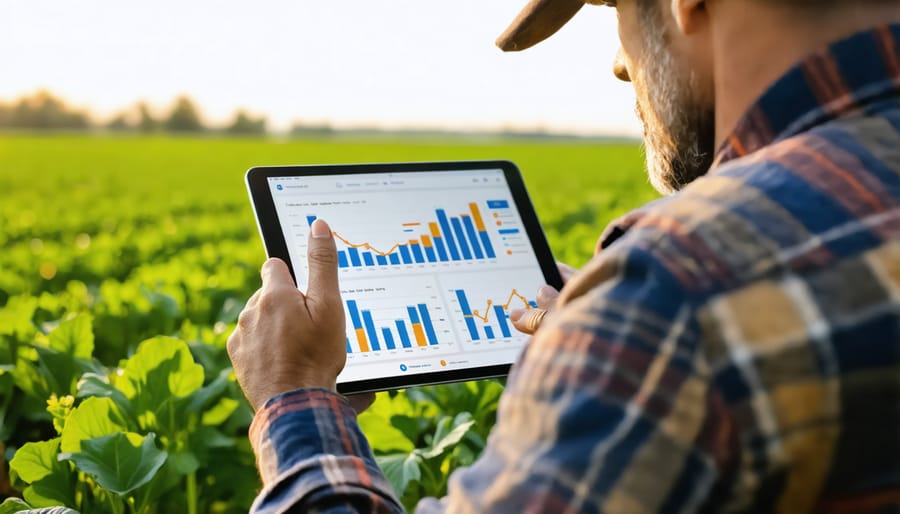
Training Your Farm Team
Introducing new software to your farm team requires patience and a structured approach. Start by explaining how the technology aligns with organic farming best practices and how it will make their daily tasks easier.
Begin with small group training sessions of 3-4 people, allowing hands-on practice with the software. Choose team members who show natural interest in technology as your “software champions” – they can help train others and provide peer support during the transition.
Create simple, visual step-by-step guides using screenshots from your actual farm setup. Post these guides in common areas and make them available on mobile devices for quick reference. Schedule regular check-ins during the first month to address questions and concerns.
Consider implementing a buddy system where more experienced users partner with those who need extra support. This approach has worked well at several Alberta farms, including the Thompson Family Farm in Red Deer, where they successfully transitioned 12 team members to new management software in just three weeks.
Remember to celebrate small wins and acknowledge team members who embrace the change. Regular feedback sessions help identify areas where additional training might be needed and ensure everyone feels supported throughout the learning process.
Real Success Stories from Alberta Organic Farms
Small-Scale Victory: The Thompson Family Farm
Located just outside of Olds, Alberta, the Thompson Family Farm stands as a shining example of small-scale organic farming success. Sarah and Mike Thompson transformed their 40-hectare operation by implementing open-source farm management solutions, proving that digital innovation isn’t just for large-scale enterprises.
Before adopting open-source tools, the Thompsons spent roughly 15 hours weekly on paperwork and planning. Their transition began with implementing FarmOS for crop planning and record-keeping, followed by integrating OpenOlitor for their community-supported agriculture (CSA) program management.
“The difference was immediate,” shares Sarah Thompson. “We cut our administrative time in half, and the accuracy of our records improved dramatically.” The farm now tracks everything from seed inventory to harvest yields, while automatically generating reports for organic certification.
The most significant improvement came in their crop rotation planning. Using FarmOS’s visualization tools, they optimized their field usage and increased production by 30% in the second year. The system’s mobile app allows them to update records right in the field, eliminating the need for paper notebooks and reducing data entry errors.
The Thompsons didn’t tackle this transition alone. They participated in local farming workshops and collaborated with other organic farmers in the region who were using similar systems. This community-based approach to implementation helped them overcome initial technical challenges and customize the software to meet their specific needs.
Total investment in hardware and training was under $1,000, with annual maintenance costs of approximately $200 – a fraction of what proprietary systems would have cost them.
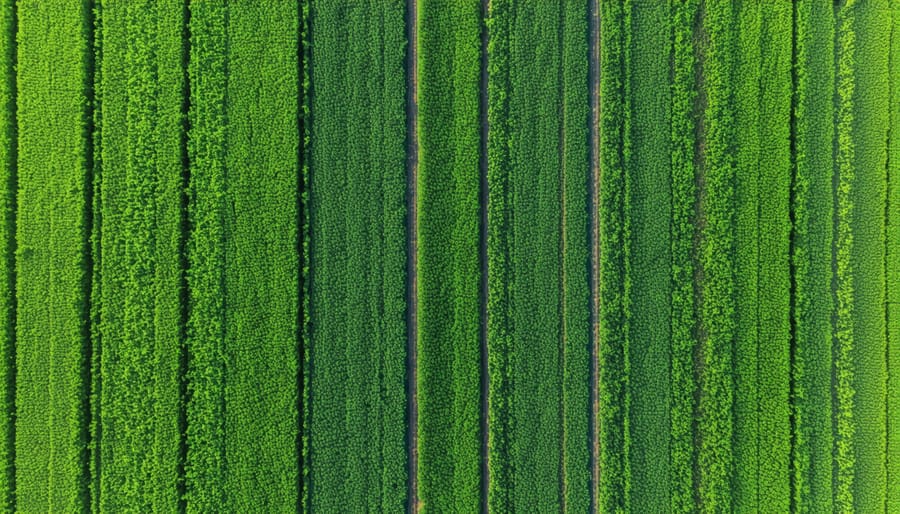
Large Operation Success: Prairie Organic Cooperative
The Prairie Organic Cooperative, serving 175 organic farms across Alberta and Saskatchewan, successfully implemented open-source farm management software in 2021, revolutionizing their operations while maintaining a tight budget. The cooperative’s transition to digital management demonstrates how open-source solutions can work effectively at scale.
“We were spending nearly $45,000 annually on proprietary software licenses,” explains Sarah Thompson, the cooperative’s operations manager. “Switching to open-source alternatives saved us over $38,000 in the first year alone, while actually improving our workflow efficiency.”
The cooperative opted for a combination of OpenOlitor for supply chain management and FarmOS for field operations tracking. The implementation process took three months, with volunteer tech-savvy members helping others navigate the transition. They established a buddy system where experienced users mentored those less familiar with digital tools.
Key achievements included:
– 40% reduction in administrative workload
– Improved crop planning accuracy by 28%
– Enhanced traceability for organic certification
– Seamless integration with existing equipment
– Creation of a collaborative knowledge base
“The beauty of open-source software is the community aspect,” shares David Chen, an organic grain farmer and cooperative member. “When we needed to modify the system to track our specific organic practices, other users from the global farming community helped us customize the code.”
The cooperative now hosts monthly online training sessions for members and maintains a dedicated support channel on their communication platform. Their success has inspired several other Canadian agricultural cooperatives to explore open-source alternatives, proving that these solutions can effectively serve large-scale operations while maintaining the principles of sustainable agriculture.
As we’ve explored throughout this article, open-source farm management software represents a powerful opportunity for Canadian farmers to modernize their operations without breaking the bank. The collaborative nature of these solutions means that farmers across Alberta and beyond can benefit from continuous improvements driven by the agricultural community itself.
The advantages are clear: significant cost savings compared to proprietary solutions, the flexibility to customize software to meet specific farm needs, and the ability to maintain control over valuable farm data. Many Alberta farmers have already discovered how these tools can streamline daily operations, from crop planning and livestock management to equipment maintenance and financial tracking.
What’s particularly encouraging is the growing community of Canadian farmers sharing their experiences and supporting each other in implementing these solutions. Whether you’re managing a small organic operation or a large-scale farm, open-source software can be tailored to match your unique requirements and grow alongside your business.
Looking ahead, the future of open-source farm management software appears bright, with new features and improvements being developed regularly by and for farmers. The transition might seem daunting at first, but the long-term benefits of increased efficiency, better decision-making, and improved profitability make it a worthwhile investment.
We encourage you to take the first step by exploring the options we’ve discussed and connecting with other farmers who have successfully implemented these solutions. Remember, you’re not just choosing a software solution – you’re joining a community of forward-thinking Canadian farmers committed to sustainable and efficient agricultural practices.




